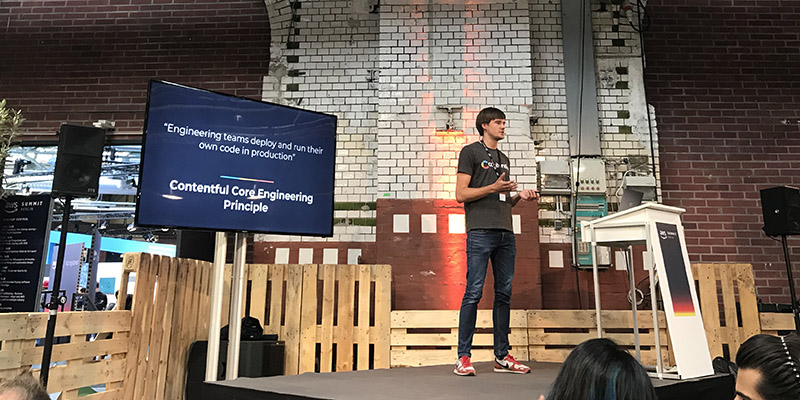AWS Startups Blog
Future-Friendly: Johannes Würbach from Contentful Explains Adaptable Content
 As human beings in a digital world, we’re constantly encountering and processing information. It comes to us as text, charts, photos, podcasts, music, weather reports, daily step counts, traffic alerts, maps—you name it—and we receive all this information via an array of electronic media and devices, from laptops to fitness trackers.
As human beings in a digital world, we’re constantly encountering and processing information. It comes to us as text, charts, photos, podcasts, music, weather reports, daily step counts, traffic alerts, maps—you name it—and we receive all this information via an array of electronic media and devices, from laptops to fitness trackers.
For the people and companies producing all that ever-evolving content, the challenge has increasingly become more complicated than delivering it in a single form. Today’s content needs to be dynamic and adaptable to meet consumers where they are, through whatever device they’re currently plugged into.
“Successful companies now really try to stay directly in contact with the customers through ever-evolving content and experiences,” explains Johannes Würbach, senior back-end engineer at Contentful, which provides content infrastructure for developers and content creators. “I think this need for immediacy and adaptability is fundamentally changing how corporations produce their digital products. They’re no longer building a website or an app and letting it run; they’re evolving and learning from customer engagement to elevate the customer relationship.”
With legacy content management systems most businesses use, the webpage-oriented frameworks limit adaptability across platforms. “We see a lot of core businesses, such as finance and healthcare, really fear the digital transformation,” says Würbach.
That’s why Contentful emphasizes ease of use, to facilitate a seamless transfer of information from creator to consumer. Contentful’s platform for storing and managing content modularly lets it be reliably delivered to any website, app, device, appliance, or gadget that a consumer can get their hands on. In other words, content managed by Contentful becomes flexible, adaptable, and reusable, which simplifies its distribution across the internet and the globe.
“A lot of companies are overwhelmed by the sheer volume of content their customers need, and so making it accessible to developers, content creators, editors, and designers, is essential to bring this content to the customer. We try to make this distribution a lot easier,” says Würbach. “You shouldn’t have to think about where to store content and how to distribute it, because that’s not your business goal.”
To that end, Contentful’s content infrastructure isn’t just geared toward current device technology; it’s built to adapt to future technological advancements in content delivery. Contentful calls this “future-friendly” content.
Contentful’s cloud-based infrastructure allows developers and content creators to securely access their content from anywhere. And Contentful’s SDKs are available in multiple languages to make them as user-friendly as possible, says Würbach, “to be able to have the structured content in a central place to easily manage it, and to be able to access it everywhere in flexible ways.”
Contentful’s engineers make sure everything runs smoothly while allowing developers from individual companies to do their own thing. “We allow engineers [to be] as free as they want, in terms of what services they choose,” says Würbach. “As an infrastructure team, one of our core principles is that every engineer or every engineering team is running their own code, which means they can choose whatever they like.”
This developer-centric ethic makes Contentful stand out in its field and it allows Contentful to constantly be on the lookout for ways to make developers’ experiences even better. “It’s not just [about] releasing an SDK and putting it somewhere and hoping that somebody is downloading it,” says Würbach.
Contentful focuses on creating a community among developers by soliciting feedback and monitoring how its infrastructure is being used. This drives its process for innovation.
“We started with one developer who was trying to solve his own problems with content management systems. That’s at the heart of Contentful,” continues Würbach. “We help other developers be more efficient in what they do. And I think that’s a pretty cool thing.”